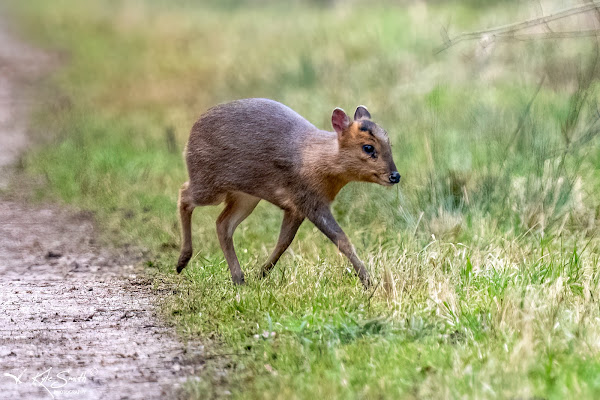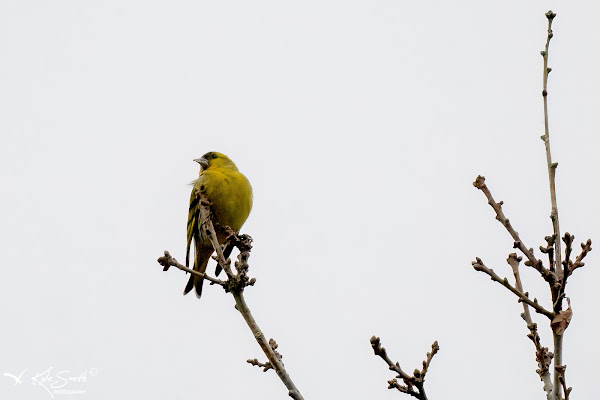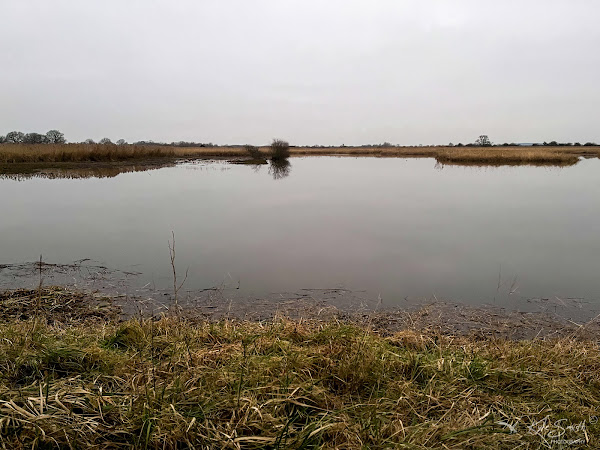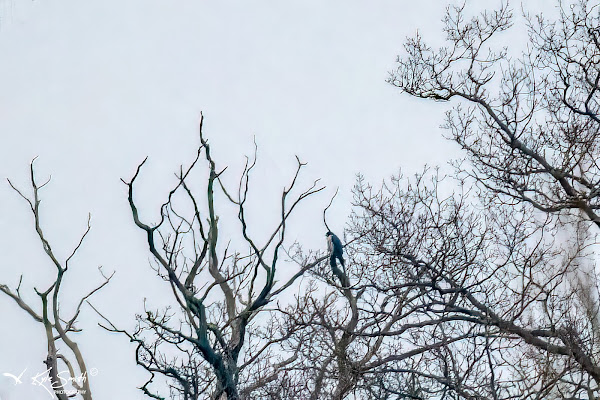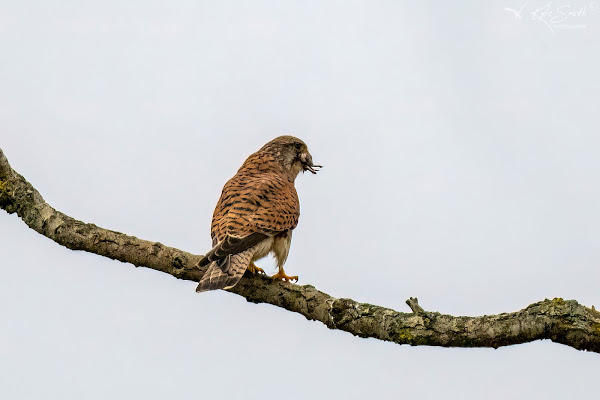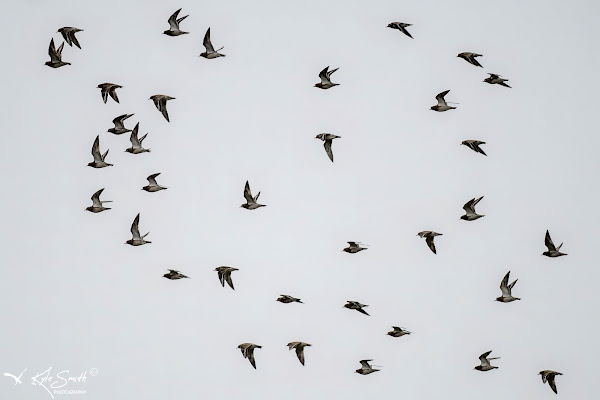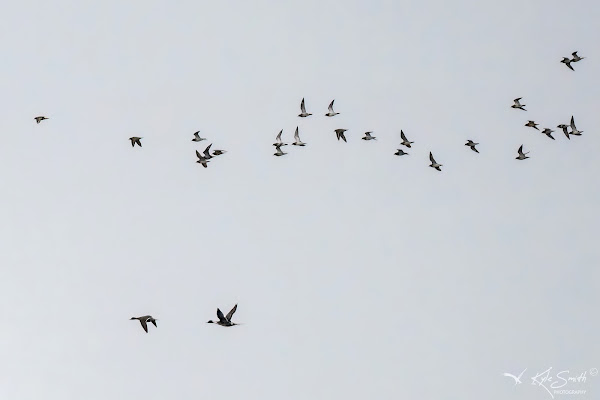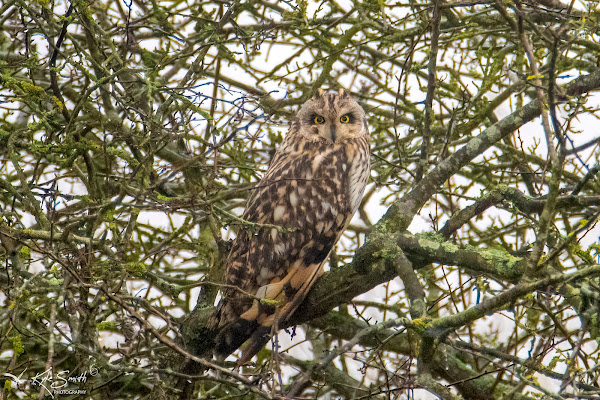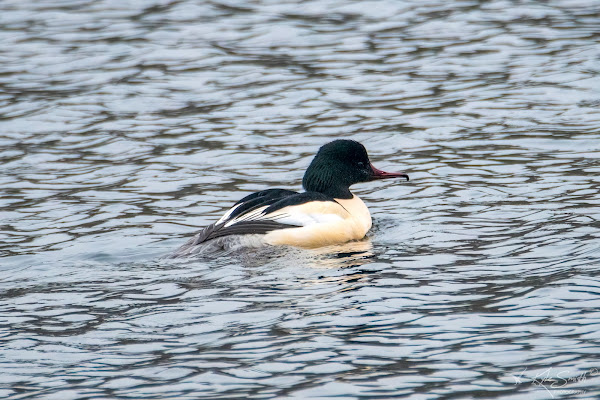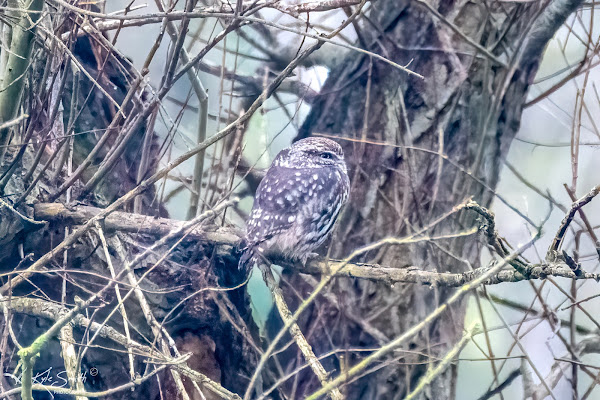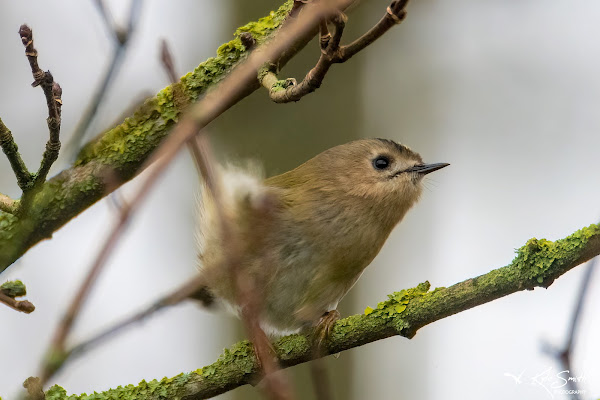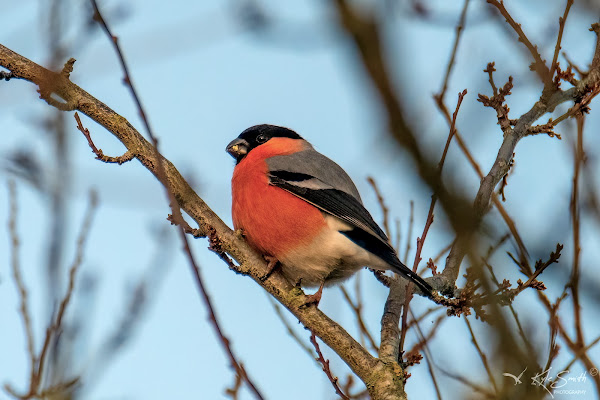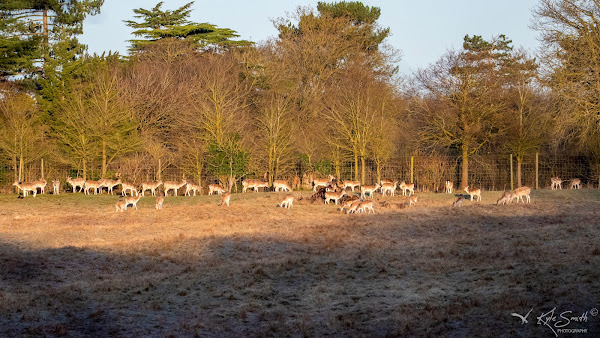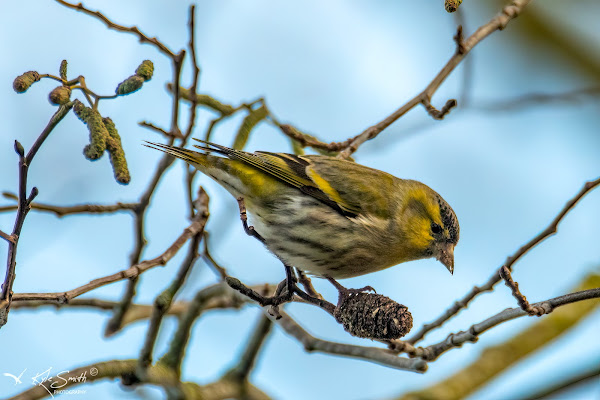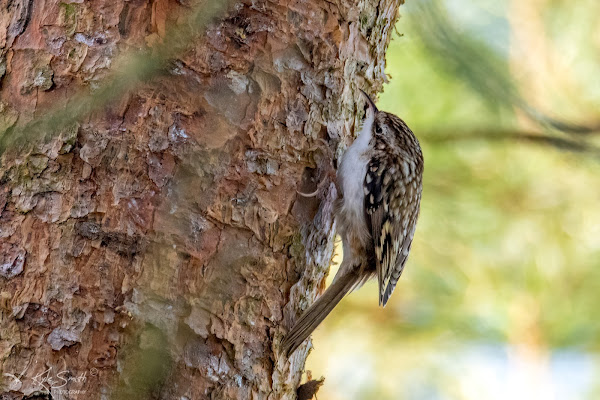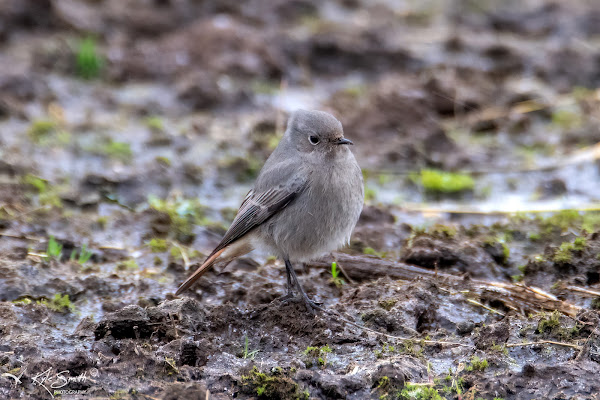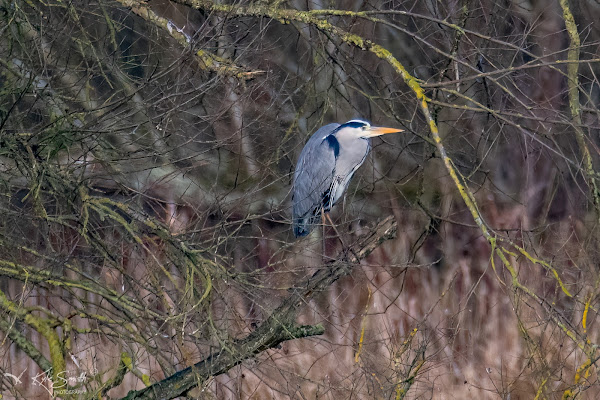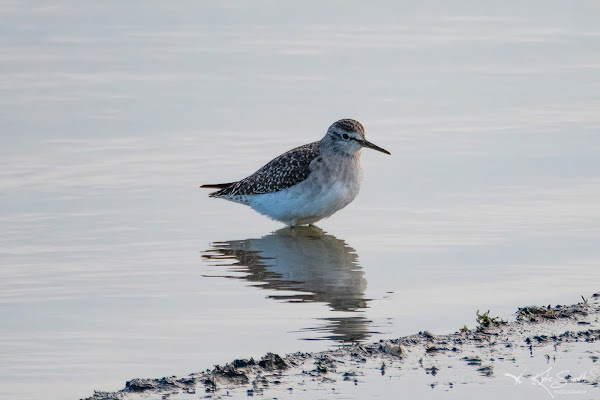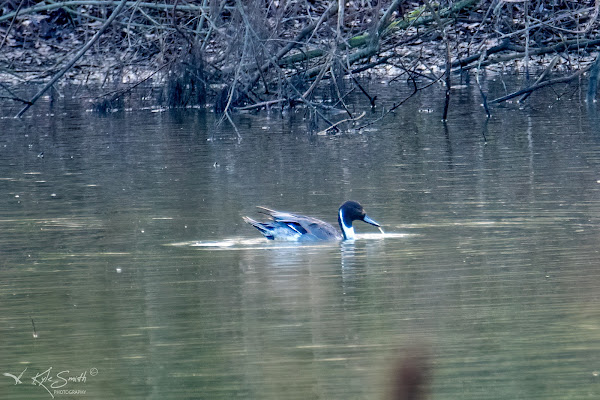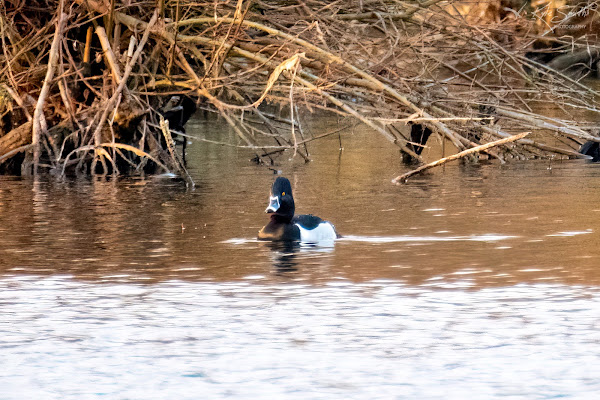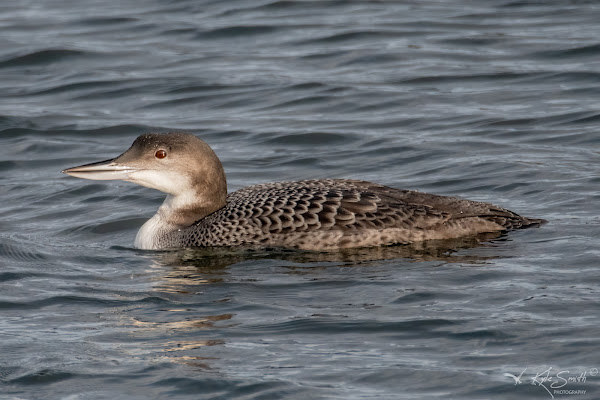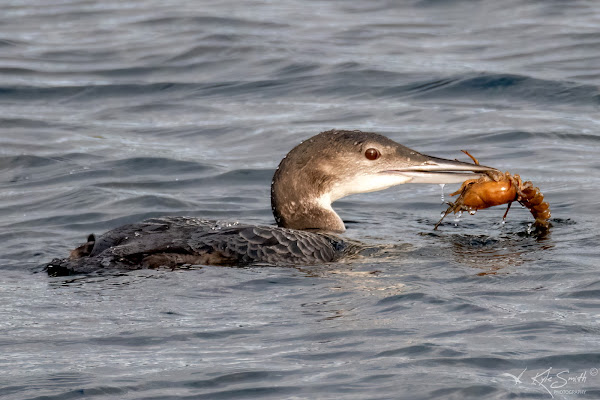Saturday was my birthday and so being with the family took up much of the morning. Approaching lunchtime, we resolved to go out for a walk, and I suggested a couple of options - Bucknell Woods was selected. I was happy with this as I hadn't been for a while, and it is a place I've encountered crossbills over the years. We took the final space in the car park and set off up the main track leading into the heart of the wood. We met a couple of dog walkers and a 2+2 family coming the other way – this stretch was quiet with only robins, tits, wren and blackbird showing. Often on this initial path we have at least the sight of a deer but no such luck today.
At the crossroads, a flock of tits crossed into the trees beyond; the predominant species was coal tit and not blue or great tit as might be expected. I searched through the birds but couldn't find anything travelling with them. Behind these trees I could hear a nuthatch calling and we were fortunate to see it cross the path and back again, but almost immediately after, out of view.
Not long after we decided to move on and quickly another dog walker approached with three dogs - two close to him and another halfway between us. My wife asked what the closest dog was and paying more attention it turned out not to be a dog, but a small muntjac deer. It fed to the edge of the path and appeared to be a very relaxed about our presence. It was a credit to the dog walker that his beasts didn't react to the deer and stayed with him – as we closed distance the muntjac wandered off into the scrub, apparently in no hurry.
This part of the wood is where I’ve usually encountered crossbills, so we took our time working slowly along the conifers, but only added goldcrest. It was remarkably quiet. At the next crossroads we looked ahead and saw a lot of mud. We agreed to turn down the surfaced path and came across a small flock containing tits and a few more goldcrests. A sparrowhawk appeared and crossed our path, disappearing over the trees to our left - not in pursuit of prey but not far from where we had just seen the flock of small birds - an unsuccessful pass?
Our path opened out as we reached a lane and as we were about to re-enter the woods we looked up to see a bright colourful male siskin on a very high tree top - we could hear more siskins beyond but this was the only individual visible. It seemed settled and perched in the same place until we moved on.
Reaching the car park we decided to make a loop out to the northeast, finding the paths much wetter here. We picked our way along the edge of the wood and found the area just as quiet, although we could watch goldcrest feeding high above. It was a very nice walk, but sit was lightly disappointing from a birding viewpoint - I had added nuthatch and coal tit to the year list though.
The following morning I met Kevin Heath at 6.00am and set off to RSPB Otmoor - we planned to be in place ready for the starlings to exit the roost. Really, we hoped to see if anything interesting (hen harrier?) might show. Driving down Otmoor Lane I had a tawny owl fly between the trees and became the first species on the morning's list. Reaching the car park, it was still pitch dark and so when we set out, we used torches to see where we were going – Kev used a head torch and me my phone. We made our way through the mud and through the gate leading to first screen. Birds flew back and forth over our heads and across the path to first screen - unfortunately we could identify the call – very frustrating. We soon reached first screen and settled in. It couldn't have been more than 10 minutes when a young lad turned up and perched by the window at the opposite end of the screen. As we approached daybreak, we could see that there was little on the water - presumably the birds were roosting elsewhere around the reserve (or adjacent fields) and would return to the water as we passed sunrise.
Eventually the starlings broke cover but not from any of the reeds between first and second screen, nor the reeds or hedgerows beyond - they emerged over Big Otmoor and out over the reed bed towards Murcott - vast numbers. We'd hoped for some raptor action but no such luck. The huge flock was quickly high in the sky and easily viewable but we didn't see any raptors amongst them – however around us we did start to see marsh harrier, red kite, and also a distant barn owl.
From the back of the screen we heard and then saw bullfinch then returned in search of the jack snipe that has been showing quite well of late.
Common snipe were coming in regularly and despite working our way through all the birds, we couldn't find a jack snipe. The water appeared to be higher than the recent photos we'd seen and when Peter Barker arrived he informed us that they'd started raising levels again after they’d completed the reed cut. Kev scanned to our left again and spotted a water rail feeding along the base of the tall stalks - our first for the year. Reports from second screen suggested there was nothing much to draw us that way other than a peregrine in a tree. I started scanning the far treetops - amazingly I picked out a very distant perched bird and when I got the scope on it, it was indeed a peregrine - another year tick. The bird was so distant that it was again easier to take a photo through the scope rather than with a dslr camera and lens - the photo below is through the dslr in any case.
Over to our right a red kite circled over the water, passing the same spot time after time. We couldn’t identify what it was interested in but after about ten passes it gave up and rose up and out of view.
Heading back we reached the hide between The Closes and Ashgrave finding finches and tits feeding on seed - linnet, chaffinch, reed bunting, yellowhammer, the usual tits but no brambling. The mixed flock flushed and we looked to see if we could work out why - a sparrowhawk stormed through - unsuccessful in its hunt, it curved over Ashgrave and then back towards Big Otmoor.
We worked back along the bridleway and by the gate heard water rail calling. By the cattle pens we flushed a sparrowhawk and watched as it crossed Greenaways in the direction of the Roman Road. We followed the bird and as we progressed a kestrel burst through the hedge ahead clutching prey, and landing in a tree ahead - by the time we got there it had legs protruding from its beak. It soon departed and we returned to looking back over Greenaways, enjoying the flocks of golden plover dropping in. After a few minutes lapwing and golden plover took to the sky, spooked by a passing marsh harrier. Below the flock we could see a couple of pintails - a larger flock had been showing over Big Otmoor - nice to see good numbers on a local reserve.
We decided to make our way down the Roman Road, passed the car park and back to the feeders. We hoped to encounter marsh tit or a lesser spotter woodpecker. In the end we simply saw tits, finches, and a great spotted woodpecker. We repaired to the car for a drink from our flasks and made for home having had a good day but regretting not having been able to visit before the rise in water levels, and to have missed jack snipe.


